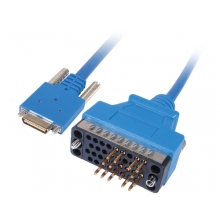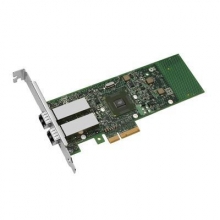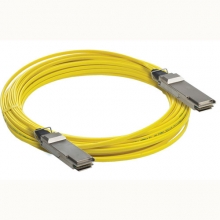- Optical Transceivers
- SFP+ Transceivers
- XENPAK Transceivers
- XFP Transceivers
- X2 Transceivers
- SFP Transceivers
- Compatible SFP
- 3Com SFP
- Alcatel-Lucent SFP
- Allied Telesis SFP
- Avaya SFP
- Brocade SFP
- Cisco SFP
- D-Link SFP
- Dell SFP
- Enterasys SFP
- Extreme SFP
- Force10 SFP
- Foundry SFP
- H3C SFP
- HP SFP
- Huawei SFP
- Intel SFP
- Juniper SFP
- Linksys SFP
- Marconi SFP
- McAfee SFP
- Netgear SFP
- Nortel SFP
- Planet SFP
- Q-logic SFP
- Redback SFP
- SMC SFP
- SUN SFP
- TRENDnet SFP
- ZYXEL SFP
- Other SFP
- FE SFP
- GE SFP
- OC3 SFP
- OC12 SFP
- OC48 SFP
- Copper SFP
- CWDM SFP
- DWDM SFP
- BIDI SFP
- Fiber Channel SFP
- Multi-Rate SFP
- SGMII SFP
- Compatible SFP
- GBIC Transceivers
- Passive Components
- Networking
- Cables
- Equipments
- Tools
- Special Offers


Fiber Optic Transceiver for RF over fiber
Optical Zonu Corp. has introduced the OZ1600 Ultra Broadband Fiber Optic Transceiver for RF over fiber-optics links. The new transceiver is designed for operation up to 7 GHz with exceptionally flat frequency response. It is packaged in a rugged dust-tight cast metal housing with optional integral WDM for duplex transmission on one SMF-28 singlemode fiber.
Optical Zonu says key attributes of the new product include:
operation from 20 MHz to 7 GHz
high SFDR, which provides “excellent noise performance and high linearity”
very stable gain
flat frequency response
extended temperature range of operation
a rugged, simple, modular package.
Since the analog RF parameters of fiber optic transmission depend upon the operating temperature of the laser diode, transceivers such as the OZ1600 use a thermo-electric cooler (TEC) that locks the temperature of the laser at a constant level, stabilizing the laser wavelength, optical powerm, and relative intensity noise (RIN). The new transceiver operates over -20°C to +65°C with gain variation of less than 2 dB, the company asserts.
“These linear RF over fiber transceivers allow physical separation of RF systems components that cannot be achieved using coaxial cable or transmission lines,” said Soyola Baasan, director of sales at Optical Zonu. “They offer significant improvements in the transport of RF signals in their native format reliably over many optical networks and across a broad range of frequencies. Applications that benefit most from this technology include antenna “remoting,” satcom, GPS distribution, DAS, distributed emitter systems, timing and frequency signal transmission over optical fiber that requires low phase noise, WiMax, 4G LTE, or any other application that requires sending RF signals over optical fiber reliably and in very stable form despite ambient temperature variation.”
The standard optical connector is the SC/APC (FC/APC is also available) for low back reflection applications like analog video and long-haul digital data transmission. An optional multimode fiber version is also available.
The base OZ1600 unit is priced depending upon the specification of options and unit volume (contact the factory for details) and is available 6 to 8 weeks ARO.



















































